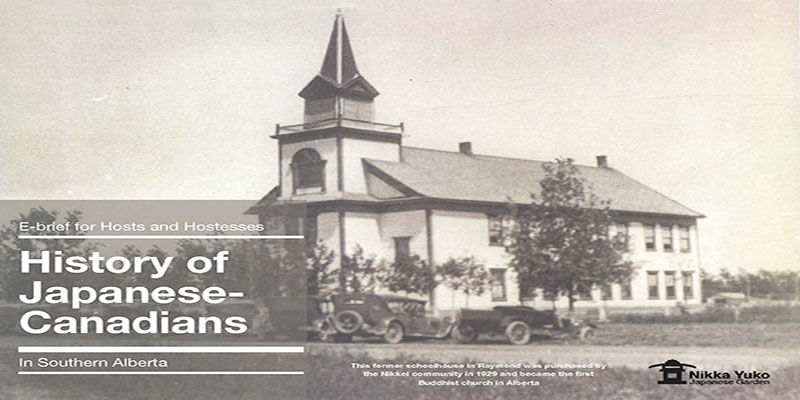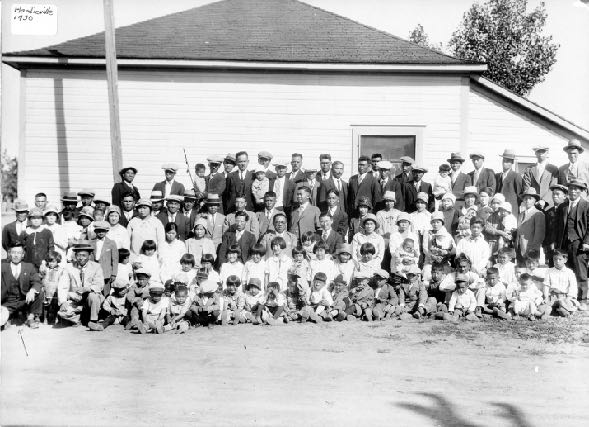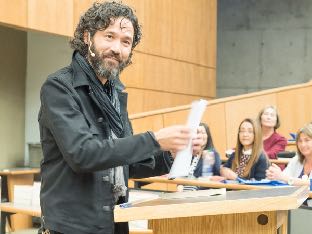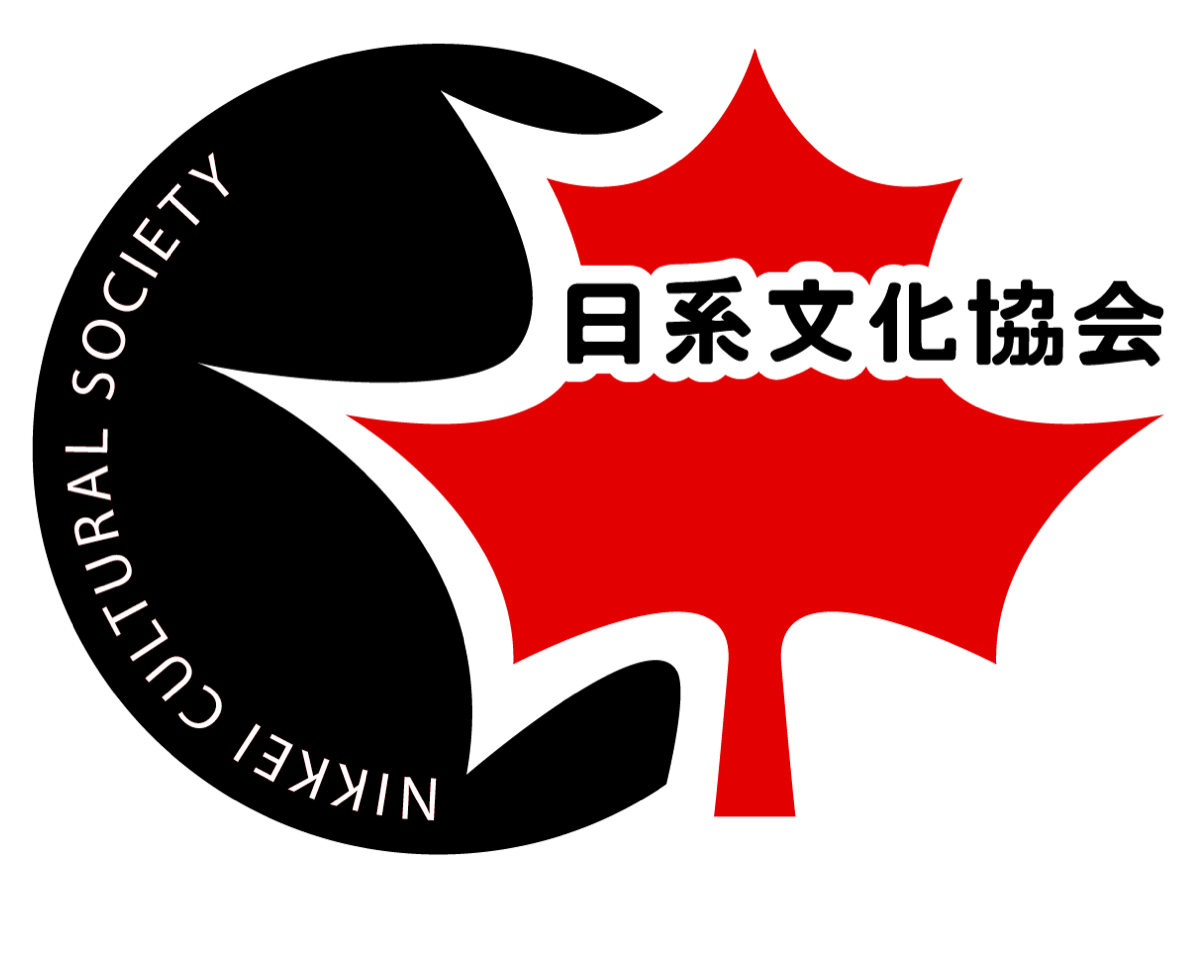History of Japanese Canadians
History of Japanese Canadians

The story of Japanese Canadians or “Nikkei” in southern Alberta starts more than a century ago and can be divided into three periods.
1. Old Timers (Pre WWII)
The “Old Timers” were first-generation Japanese immigrants or Issei. They settled in southern Alberta in the early 1900s mainly in two communities.
Hardieville became home to immigrants from Okinawa (a prefecture in southern Japan) who came to work as coal miners or railway workers. One early immigrant from Okinawa worked on construction of the High Level Bridge in Lethbridge. From 1909, Okinawans settled in Hardieville and initially worked in the various coal mines in the area. Later, some opened retail stores or became farmers.
Coming from various parts of Japan, immigrants to Raymond became primarily farmers. In 1929 the Raymond Nikkei community bought an old schoolhouse in Raymond (cover photo) and established the first Buddhist

In the early 1940s, there were roughly 550 Canadians of Japanese descent living in southern Alberta.
The story of Japanese Canadians or “Nikkei” in southern Alberta starts more than a century ago and can be divided into three periods.
2. Forced Relocation
When Canada went to war with Japan in 1942 people with Japanese ancestry were declared enemy aliens. Around 22,000 west coast Japanese Canadians, about three-quarters of whom were born in Canada, were forced from their homes. Most were sent to detention camps in the East Kootenays but 370 families, roughly 2200 individuals, were sent to southern Alberta to work as labourers on farms.
Thus, during WWII the population of Nikkei in small southern Alberta communities grew substantially. By 1950 Buddhist churches had been established in Picture Butte, Coaldale, Taber, Brooks and Lethbridge, and the Southern Alberta Japanese United Church was formed in Lethbridge.
After WWII many displaced families moved elsewhere, but some stayed and built their lives here in the post war years. The Nikkei in southern Alberta enjoyed the prosperity and growth in opportunities offered by the post WWII boom. Many Nikkei established retail

Yosh Senda (front row, middle) was relocated to Picture Butte but taught Judo in Raymond. The late Dr. Senda is Canada’s most prominent judoka — Judo Canada’s National Coach and Olympic coach in the 1980s, and honoured with more than 20 local, national and international awards.
After the war it became evident that west coast Nikkei had posed no threat. Reports by the RCMP and Canadian military stated as much. Anti-asian racism was a fact of life in Vancouver
The tragedy and outrage of this was not lost on southern Albertans. Civic leaders like Lethbridge Herald editor, Cleo Mowers, championed the idea of the Nikka Yuko Japanese Garden as an enduring symbol of friendship.
A survey done by the United Church in 1978 revealed that of the 4000 Japanese Canadians living in Alberta at that time, nearly half (approximately 1800) lived in the Lethbridge area, more than in Calgary (1400) or Edmonton (800).
New Immigrants
Between 1969 and 1976, roughly 220 young Japanese men had come to southern Alberta to study agriculture. Many stayed, and in 1981, the Southern Alberta New Japanese Immigrants Association was formed, representing approximately 40 families. SANJIA became the social and support group for these new immigrant families.
One new immigrant was Taka Kinjo, who came to Lethbridge in the 1960s and established a Karate dojo here, which celebrated its 45th Anniversary in 2018. Kinjo Sensei holds a 10th degree black belt in Gohakukai Karate.
This period marked the third wave of immigration to southern Alberta and also the beginning of the current trend of modest increases in Japanese immigration of roughly 1200 per year nationally.


Notes
These e-briefs were created to give you some “talking points” to help you tell visitors about the many fascinating aspects of Nikka Yuko. Please consider them only as starting points. This brief was prepared in consultation with the Nikkei Cultural Society of Lethbridge and Area. © 2019 Nikka Yuko Japanese Garden
